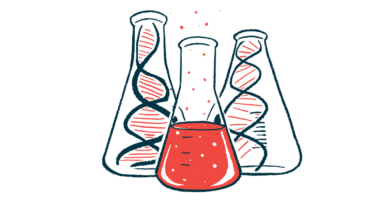Model May Better Classify Multiple Myeloma and Relapse Risks

A model that may better classify multiple myeloma (MM) using genetic sequence data from hundreds of patients has been developed.
The model can identify specific genes and genetic alterations responsible for disease subtypes related to a risk of relapse, and it may contribute to the identification of targeted therapies, according to the study’s researchers, led by a team at the Icahn School of Medicine at Mount Sinai, New York.
“Our findings have immediate implications for the development of novel precision medicine tools and clinical trials, as different subgroups of patients may respond to different targeted and immuno-oncology therapies,” Alessandro Lagana, PhD, an assistant professor at The Tisch Cancer Institute and a lead study author, said in a Mount Sinai press release.
The study “Patient similarity network of newly diagnosed multiple myeloma identifies patient subgroups with distinct genetic features and clinical implications” was published in Science Advances.
Multiple myeloma is a cancer that affects specific white blood cells, and is characterized by “remarkable” variations in genetic markers and in clinical response, the researchers noted. Personalized treatment approaches — those based on an individual’s genetic mutations — are being tested in clinical trials.
There are no currently established MM classification systems based on patients’ genomic (DNA sequence) or transcriptomic information, meaning the RNA sequence or what is actually transcribed as messages based on the DNA sequence.
Researchers at Mount Sinai suggested that a multi-omics approach, where both genomic and transcriptomic data could be used to generate a patient similarity network (PNS), would better classify patients based on similarities in various features, including genomic profiles.
“In a PSN, patients are represented as nodes, much like in a social network … The network structure enables effective identification of communities of highly similar patients, allowing a more comprehensive classification than other approaches based on a single measurement,” they wrote.
Using this approach and information from 655 tumor samples from newly diagnosed patients taking part in the Multiple Myeloma Research Foundation (MMRF)’s CoMMpass study, the researchers created a computational model that they called the Multiple Myeloma Patient Similarity Network (MM-PSN).
Translocations (when a part of a chromosome is exchanged with or moved to another chromosome) and copy number alterations (changes in the number of copies of a specific gene) provided the strongest contribution to the MM-PSN, followed by gene expression, gene fusions (when two genes join together), and single nucleotide variations (where a single DNA base in a gene is changed).
Clustering the MM-PSN identified three main patient groups and 12 subgroups. Each group was enriched for distinct genetic and molecular features, and provided insights into primary and secondary genomic alterations occurring within each patients’ specific cancers.
MM-PSN clustering also allowed the researchers to form groups of patients with similarities to a degree beyond that of previous MM classifications. In fact, this type of clustering was reported to show a lot of diversity among previously defined disease classes, and to help define new classes of high-risk patients beyond current classifications.
“Overall, our MM-PSN model organized previous knowledge on genetic markers into broad patient groups … and then further refined and harmonized such knowledge cohesively with other genetic and molecular markers to determine subgroups of highly similar patients,” the researchers wrote.
One important finding of the MM-PSN analysis was that a mutation within chromosome 1 — which researchers refer to as ‘gain(1q),’ which was defined as involving the “gain of the long arm of chromosome 1, a high-risk feature observed in [approximately] 40% of MM cases” — is associated with a high risk of relapse.
The team suggested that this genetic alteration should be added to international myeloma staging systems.
Another important finding was that the combination of this gain(1q) mutation and a translocation involving the MMSET (multiple myeloma SET domain) — referred to as t(4;14)-MMSET — resulted in worse outcomes, with poorer overall patient survival.
“Our analysis revealed that co-occurrence of t(4;14) and 1q gain identified patients at significantly higher risk of relapse and shorter survival as compared to t(4;14) as a single lesion,” the researchers wrote. These results were further confirmed in an independent dataset.
Based on the data obtained, the researchers believe that MM-PSN classification “is a valuable and accessible resource that can be used in most clinical settings” to help identify multiple myeloma patient subgroups and to “gain novel insights into the molecular mechanisms and pathways that drive each disease subtype,” the researchers wrote.
“These studies are fundamental to advancing our understanding of myeloma pathology and pave the way for future research into drug repurposing approaches aimed at novel therapies tailored to specific patient subgroups,” Lagana concluded.







